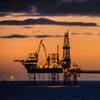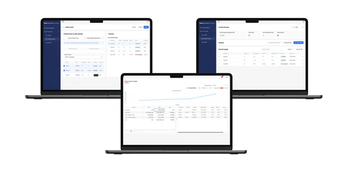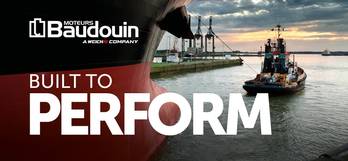Feature: New Potency in Electronic Control
German predilection for technological advance permeates all areas of primary business and industrial activity, to the undoubted benefit of the competitive standing of its international market players. In the maritime domain, a clear appreciation of the long-term operating benefits promised by the application of electronic regulation to massively powerful, two-stroke propulsion engines is denoted by Hapag-Lloyd's selection of K98ME diesels for its next generation of linehaul vessels.
In explaining some of the rationale in opting for electronically controlled, 'cathedral' engines of the largest size produced to date, an article in a recent edition of the in-house publication Hapag-Lloyd News illustrated the pragmatic approach to state-of-the-art technology. The group's endorsement of a step change in engine design acknowledged the gains achievable through increased plant efficiency and performance level, all of which has a signal bearing on unit cost competitiveness and service dependability in the rigorous business of liner shipping.
Each of three 8,145-TEU boxship newbuilds at the Hyundai yard will be powered by a single, 12-cylinder K98ME engine, for a maximum output of 93,360-bhp (68,640-kW). With the ME design, MAN B&W's Copenhagen two-stroke technicians have eschewed conventional camshaft drive in favor of electronically-controlled fuel injection and exhaust valve actuation. The arrangements will enable engine settings to be exactly matched to changing operating requirements throughout the voyage profile, offering the prospect of reduced overall fuel consumption, greater operational flexibility and lessened environmental impact.
One benefit will be the lower sailing speeds obtainable for restricted water transits as a consequence of the possibility to safely run the engine at extremely low crankshaft speeds. "As little as four knots are possible, and precisely this will mean greater maneuverability in the Suez Canal," pointed out Klaus Marek, head of Hapag-Lloyd's ship technology and inspection department. By comparison, the company's four 7,500-TEU Hamburg Express-class vessels, fitted with conventional camshaft 12K98MC engines, have a minimum speed of six knots.
"The special plus of the electronically regulated main engine is that it uses two-percent less fuel," observed Marek. The report in Hapag-Lloyd News indicated a potential annual saving for the nascent trio of 8,145-TEU containerships as around 3,000-tons, or $360,000. More conservant use of heavy fuel oil, both in absolute terms and per unit of cargo volume, obviously has environmental as well as economic benefits, and Nox (oxides of nitrogen) engine exhaust emissions are expected to come down to 12.3 grams per kW-h (kilowatt-hour) as a result of the nomination of 12K98ME plant. "We have opted for diesel engines with electronic control systems because, in the future, we want to be able to react more flexibly to environmental requirements," Marek added.
MAN B&W's recent inclusion of a still wider-bore, new engine design in its ME program, in the shape of the mighty K108ME-C type, provides liner operators with an electronic, single-engine option for unit power requirements up to an astonishing 132,300-bhp.
Research as the Building Block
An absence of complacency over its position as the global market leader in newbuild construction is demonstrated by Hyundai Heavy Industries' increasing plough-back of earnings into research and technological development. The raised level of annual expenditure on R&D, coupled with the group's strengthening of its network of research institutes, express a belief in the fundamental link between applied research, innovation, competitive position and market reach.
HHI's investment in R&D activities is set to rise to about $102.4-billion in 2003, equating to 1.4-percent of projected sales revenues, up from $85.7-billion, or 1.2-percent of sales, in 2002.
The scale of the endeavor, which relates not only to the group's shipbuilding activities, but also to its role as a producer of marine engines, offshore and industrial plant, electrical systems and construction equipment, is implicit in its maintenance of four in-house research centers, including the Hyundai Maritime Research Institute.
In a shipbuilding and engineering context, expansion of the research budget is driven by market requirements, by a desire to increase technological and product self-reliance and competitiveness, and by a bid for increased business in the higher value-added category. The rise of China as an industrial powerhouse with a low labor-cost base is one of the spurs to technological advance.
The disposition towards a long-term strategy was earlier underscored by the $35-billion, 10-year R&D program, which resulted in the home-grown, Himsen medium-speed diesel engine class. At the time of this writing, the Himsen series had attracted orders for over 200 engines in shipboard and landside generator applications, and the first unit for marine propulsion duties is set to be installed in a patrol vessel newbuild.
Over the 2003 first-half, HHI's shipbuilding division secured contracts for 64 vessels worth $3.2-billion, exceeding the target for the whole year. By the end of July, the orderbook stood at an astonishing level of 172 newbuilds, with a combined value of about $9-billion.
Knowledge Interchange
The increasing interplay of commercial marine and naval disciplines has found new expression in the appointment of Registro Italiano Navale (RINA) to class the largest, and most complex ship ordered to date by the Italian Navy. RINA introduced special rules for naval vessels at the end of 2002, and the society will now apply its expertise to the newbuild project for the 26,700-ton displacement aircraft carrier Andrea Doria, ordered from Fincantieri for commissioning in 2007. Construction of the carrier has been assigned to the group's Riva Trigoso yard.
Measuring 776 ft. (236.5 m) the vessel will be built from high-tensile, anti-ballistic steel, and will have a maximum speed of 28-knots. RINA's selection to class the vessel reflected its experience with state-of-the-art, high capacity cruiseships and fast craft.
The society's CEO, Ugo Salerno said, "RINA has established a reputation for project management skills, safety, quality and service in classing highly complex commercial ships, and looks forward to bringing those standards of excellence to such a major project in the warship sector."
"We also expect the commercial sector to benefit from the high technology we can transfer from the military newbuilding program," he stated, adding that "This is a win-win situation for the navy and for our cruiseship clients."
The orderbook of Fincantieri's naval vessel business unit is currently worth around $2 billion, and includes a series of Horizon-class frigates and two U212A-type submarines for the Italian Navy, besides the Andrea Doria. A follow-on, large batch of multipurpose frigates are envisioned for construction at Fincantieri's shipyards in Liguria for service entry between 2008 and 2017.










